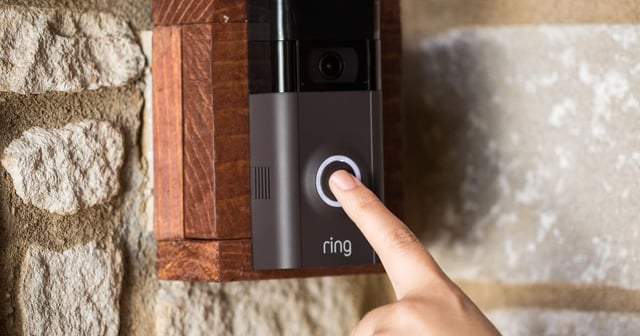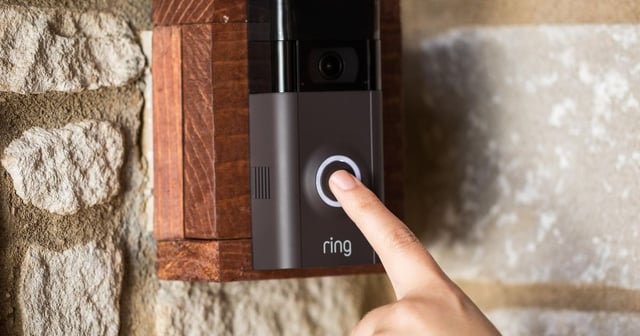How Ring’s Neighbors app is making home security a social thing

Thumbing through the Neighbors app on my phone, I get the feeling that my quiet New Jersey suburb isn’t so safe.
There are videos of folks appearing to walk up to front doors and stealing packages. Another video shows an alleged vandalism of an outside light, and yet another is of an attempted car break-in. There’s the lighter stuff, too, like kids stealing whole bowls of Halloween candy — yes, including the bowl itself — and a handful of fox sightings.
I’m getting this feed through Neighbors, an app launched by Ring, Amazon’s smart-doorbell company. It’s free to download and use, and lets people share, view and comment on crime and security information in their communities. Most of the posts are video clips shot by Ring video doorbells and security cameras.
Ring CEO Jamie Siminoff said in an interview last month that he sees Neighbors as a major part of his company’s development, using the app to help more people work together to reduce crime in their communities. The app, which launched in the US in May, has over a million active users sharing information on alleged crimes and suspicious behavior, Siminoff said.
‘We’re seeing it become a foundation,’ Siminoff said. ‘It enhances everything we do in the company.’
Siminoff and Eric Kuhn, Neighbor’s general manager, spoke to CNET to show off some of Neighbors early results, saying it’s quickly becoming one of the biggest aggregators of crime and safety data in the country.
There’s been a proliferation of security tools — including Neighbors and Vivint’s similar Streety app — being created for the connected home. All these new apps, Wi-Fi-enabled security cameras, video doorbells and window sensors could reduce crime and help more consumers get access to home security services without paying monthly subscriptions. New data created by these tools could be used to help police solve crimes and prevent lawless activity before it even happens.
Yet with tech giants already well established in the home security market — Google owns Nest, Amazon owns Ring and Blink — consumers will have to weigh how much more personal data they’re willing to share with these companies. Plus, if neighborhoods become blanketed with cameras, it could create a Big Brother scenario with everyone monitoring each other.
Google’s Nest declined to comment for this story.
‘I think that social aspect is where we might go in the next year or two for the connected home and home security,’ IHS Markit analyst Blake Kozak said, ‘because it can increase awareness.’

A gateway to the smart home
Apps like Neighbors have the potential to bring smart-home tech to many more houses by convincing more people to buy video doorbells and connected security cameras, Kozak said. But, he added, Ring needs to continue building up Neighbors’ features to ensure it’s not seen as merely a marketing tool for Ring’s products.
During the interview, Siminoff and Kuhn disclosed for the first time that 23 percent of information shared on Neighbors is suspicious behavior, 20 percent is alleged crimes and 15 percent is safety issues like wild animals and public emergencies. The rest of the posts contain other stuff, like solicitors or strangers on people’s property.
Ring, which Amazon bought in April for a reported $1 billion, declined to say how many employees are working directly on Neighbors. But, Siminoff said, ‘it’s a large division at Ring. It’s not a small investment.’
The concept for the new app came from Ring workers seeing people sharing their Ring videos via email links, Facebook and Twitter. A Ring employee suggested creating a place for sharing videos on Ring’s app, so the company did just that in September last year.
Siminoff said that feature grew quickly and had more impact than the company expected, resulting in Ring launching Neighbors as a standalone app on iOS and Android in May. Millions of people are now sharing safety information through both the Ring and Neighbors apps.
Neighborhood watch
Pointing to the early benefits of Neighbors, Siminoff and Kuhn said there was a spike in activity on the app when the Hill Fire and Woolsey Fire hit Southern California last month. People were able to ask about specific streets and share safety tips. While users typically get two to five alerts per week, post and comment volume surged over 1,000 percent in the affected areas, the company said.
‘We had 30,000, if you will, camera reporters in the field able to report how things were where they were,’ Siminoff said. ‘It is hyper, hyper, hyper local.’
Kuhn said he had to be evacuated and was able to use Neighbors to know what was happening around his home.
Ring employees review every Neighbors post before it publishes to ensure it’s accurate and is related to crime and safety issues to avoid off-topic ‘noise’ on the platform, Kuhn said. As the app gains more users, he said, the company will look into using more automation to moderate posts.
The company partnered with dozens of local police departments, including Miami-Dade and Orlando, to help authorities use Neighbors as another crime-reporting and monitoring tool. Kuhn said the app has already helped solve crimes and directly resulted in some arrests.
All user posts are anonymous to the public, except those from Ring and police departments, and users can delete their posts whenever they want. Users’ exact addresses are not shared in posts, with a radius on a map provided instead.
Neighbors, of course, isn’t the only social app people can use to share this kind of information. Facebook community groups have become a major channel for posting local information. Other options include Twitter, Nextdoor and Vivint’s Streety app.
There’s also Citizen, a neighborhood watch app that was first banned by Apple when it encouraged people to try stopping crimes on their own and was first called Vigilante. Nest allows its users to share home security videos, but doesn’t provide a social app like Neighbors.
Ring is looking to make Neighbors stand out by maintaining a tight focus on crime and safety, as opposed to Facebook or Nextdoor, which allow users to share local restaurant recommendations, community calendar news and items for sale.
‘It’s giving people the ability to live a little bit better and a little bit happier and a little bit safer,’ Siminoff said.

